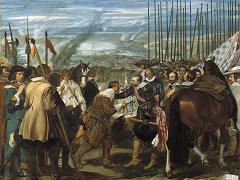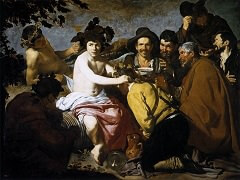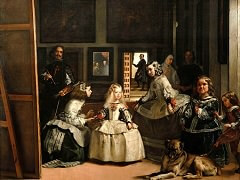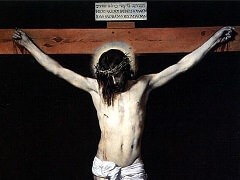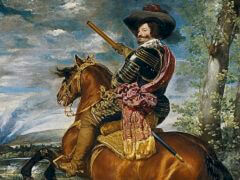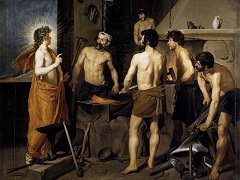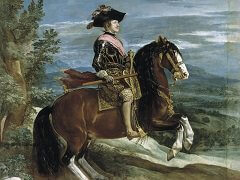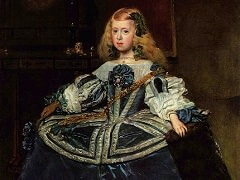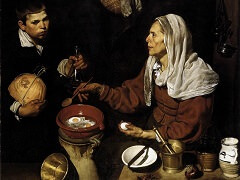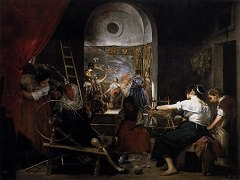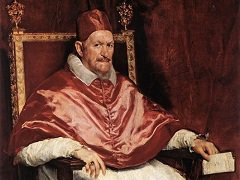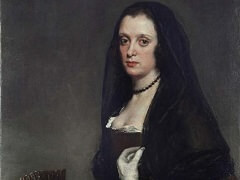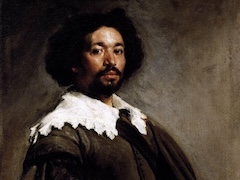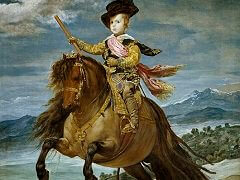Rokeby Venus, 1649 by Diego Velázquez
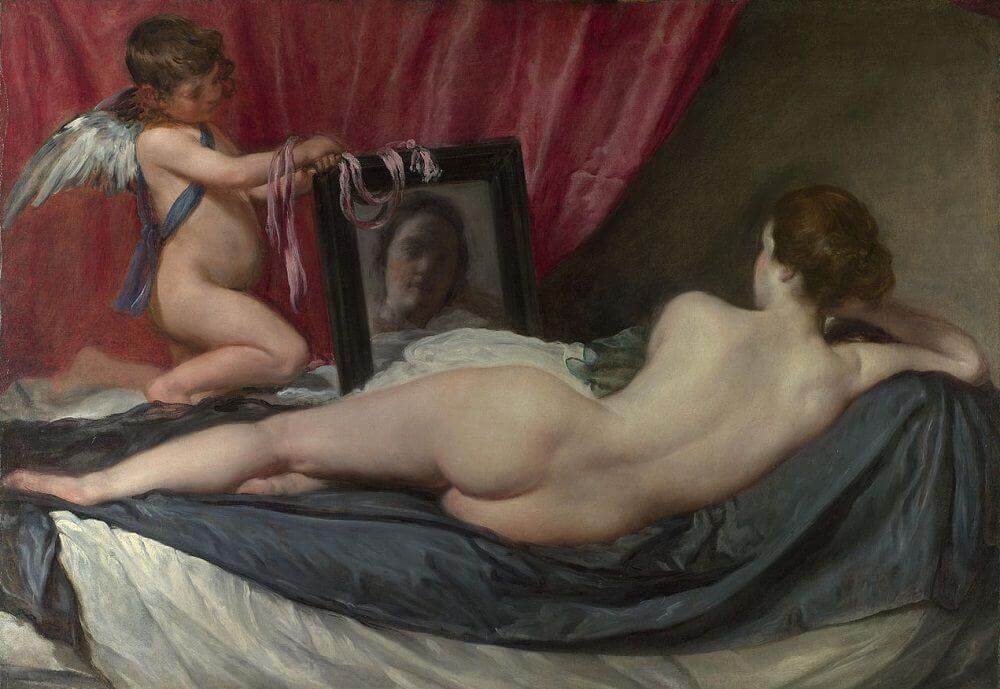
Most art historians today agree that this work was completed in Rome sometime during the artist's second sojourn in Italy - that is, between July, 1649, and November, 1650, with preference given to the later date.
Naked Maja of Francisco Goya and Rokeby Venus of Diego Velázquez are the only Spanish old master paintings of female nudes presently known to exist. However, according to inventories made during Velázquez's lifetime, it is presumed that the artist painted at least two other female nudes, in all likelihood also representing Venus.
A good many questions concerning Rokeby Venus have been raised by art historians, whether Velázquez specialists or not. Why is Venus seen from behind? Why does the mirror reflect only the face of the model? Is this simple modesty? Or fear, on the part of the artist, of excommunication by the Church?
In any event, the mirror is an important motif in the paintings of Velázquez, as it was in the work of contemporary Dutch painters. In addition to the admirable study of the nude form which captures our attention, the mirror gives the painting a second center of interest in the face of the model, which is real and yet unreal in the nature of its own reflection so that it becomes a pretext for our imagination and our dreams.
Despite the beauty of the realistic modeling of the body, it is nevertheless stylized into a somewhat "guitar-shaped" form (as noted by Lafuente Ferrari) that may have inspired the stylized forms of the odalisques of Ingres almost two hundred years later. It has been suggested that Velázquez may have been influenced by certain sculptures from antiquity, by the female nudes in Venetian painting by Titian and Tintoretto, and perhaps by the work of Rubens, whose Feast of Venus would have served as an ideal model for the Spanish master.
The blue-gray drapery on which the young woman reclines sets off to advantage the nuances of the flesh tones. These, in turn, register the play of reflections over the supple and voluptuous body, which is graced with an unsurpassed poetry.

